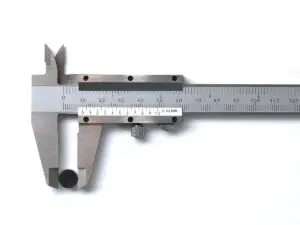
Removing Linearity From Measurements
I often find out that more and more people are using digital equipment for measurement, even to the extent that they cannot read Vernier scales or even a pair of dial calipers with any degree of accuracy. Since we seem to be moving in the direction of the digital readout, here is a method that will remove any linear measurement error from the gage you employ to inspect your parts.
Linearity can be removed from the measurement being taken by turning your digital equipment into a direct comparator gage. This is accomplished very easy by making a gage block stack to the exact size of the measurement to be inspected. That is, to the nominal dimension given on the blueprint. This technique has a couple of advantages.
First, by “zeroing” the digital gage to the nominal dimension represented by the stack of gage blocks, all the dimensions will be + or – numbers from that reading. An example would be as follows:
Nominal Dimension = 2.2255
Gage block stack = 2.2255
Zero the gage on the stack = 0.0000
1st part measured = + 0.0002
2nd part measured = – 0.0001
3rd part measured = – 0.0002
4th part measured = + 0.0003
Second, the deviation from nominal is very easy to recognize as well as the range of that deviation and the mean value is also easily seen. Consider the difference of trying to decipher the dimensions when written as actual size.
1st part = 2.2257
2nd part = 2.2254
3rd part = 2.2253
4th part = 2.2258
Thirdly, it is much easier to record deviation from nominal and to enter the data when that data is in the format of the former example.
A fourth benefit is that by zeroing out the gage at the nominal dimension, there is a minimizing effect on any linearity contained within the gage because you are now not measuring from the instrument gage origin.
